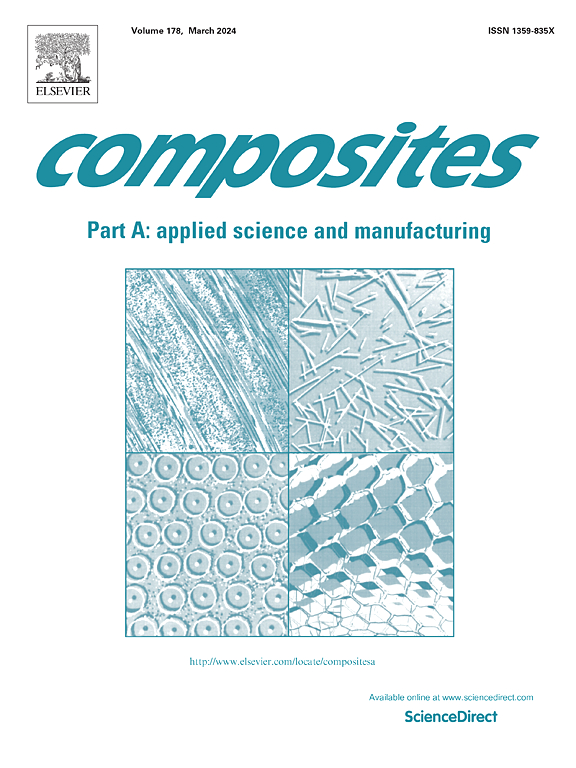Charge design for carbon fibre sheet moulding compounds—Impact on morphology and mechanical performance
IF 8.1
2区 材料科学
Q1 ENGINEERING, MANUFACTURING
Composites Part A: Applied Science and Manufacturing
Pub Date : 2025-01-07
DOI:10.1016/j.compositesa.2024.108695
引用次数: 0
Abstract
Compression moulded carbon fibre reinforced sheet moulding compounds aim to maximize the mechanical performance of discontinuous fibre composites, while maintaining low cycle times. The shape of the charge governs their in-mould flow behaviour, which is one of the most important factors influencing their mechanical performance. While high amounts of flow and the presence of weld lines have been identified as the major performance detractors, the practical implications of these finding on how charges should be designed have not yet been investigated in detail. The present study considers different charge configurations based on challenges that arise when balancing repeatable high performance and manufacturing efficiency in an industrial context. The influence of these configurations on the local internal microstructure is measured with micro-computed tomography and closely associated with the corresponding local mechanical performance measured using digital image correlation. While a charge closely resembling the part indeed yields the most reliable quasi-isotropic results, some in-mould flow aids in evacuating trapped gases and is in many scenarios preferable to piecing together charges from sheet moulding compound patches, thus introducing weld lines. Notably, an even charge coverage is important, to avoid local complex flow patterns, which highly distort the material and constitute significant weak spots.

求助全文
约1分钟内获得全文
求助全文
来源期刊

Composites Part A: Applied Science and Manufacturing
工程技术-材料科学:复合
CiteScore
15.20
自引率
5.70%
发文量
492
审稿时长
30 days
期刊介绍:
Composites Part A: Applied Science and Manufacturing is a comprehensive journal that publishes original research papers, review articles, case studies, short communications, and letters covering various aspects of composite materials science and technology. This includes fibrous and particulate reinforcements in polymeric, metallic, and ceramic matrices, as well as 'natural' composites like wood and biological materials. The journal addresses topics such as properties, design, and manufacture of reinforcing fibers and particles, novel architectures and concepts, multifunctional composites, advancements in fabrication and processing, manufacturing science, process modeling, experimental mechanics, microstructural characterization, interfaces, prediction and measurement of mechanical, physical, and chemical behavior, and performance in service. Additionally, articles on economic and commercial aspects, design, and case studies are welcomed. All submissions undergo rigorous peer review to ensure they contribute significantly and innovatively, maintaining high standards for content and presentation. The editorial team aims to expedite the review process for prompt publication.
 求助内容:
求助内容: 应助结果提醒方式:
应助结果提醒方式:


